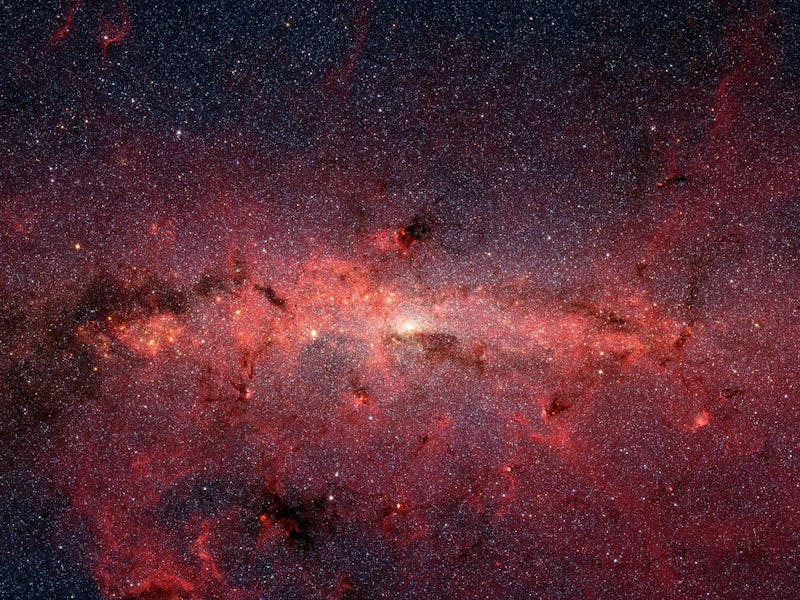Massive web of gas may solve major Milky Way mystery
The gas was likely leftover by ancient supernovae, retracing the history of our galaxy's formative years.

Over millions of years, stars form from massive clouds of gas and dust that collapse under their own gravitational pull.
A key ingredient to the birth of stars is hydrogen gas, the most abundant element in the universe. But how this gas ends up coalescing in these giant clouds is still an unsolved cosmic mystery.
But a new discovery offers clues to the mysterious grouping of hydrogen atoms that birth the stars.
In a study published Wednesday in the journal Astronomy and Astrophysics, a team of astronomers detail a web of atomic hydrogen in the Milky Way, which they believe may have been leftover from ancient supernovae.
During the early universe, atomic hydrogen made up the majority of gas in younger galaxies.
Stars form as interstellar gas falls into galaxies, generating hydrogen atoms that convert in to molecular hydrogen. This process, which occurs over millennia, directly fuels the birth of stars.
To measure the distribution of atomic hydrogen in the Milky Way, the team behind the new study used the Karl G. Jansky Very Large Array (VLA) radio interferometer located in New Mexico. The array maps gas distributed across the inner region of our galaxy.
What they discovered was an intricate network of hydrogen filaments, including one particular vein of hydrogen gas that stretches across 3000 light years.
Astronomers found what may be the largest object in the Milky Way, an extensively long filament of hydrogen gas stretching across 3000 light years.
Juan Diego Soler, a researcher at the Max Planck Institute of Astronomy and lead author of the new study, named the notably long filament "Magdalena" after the longest river in Colombia, his country of birth.
"Maggie [Magdalena] could be the largest known coherent object in the Milky Way," Jonas Syed, a postgraduate student at the institute study co-author, said in a statement.
"Because of its fortunate position in the Milky Way, we are lucky to have been able to spot it."
Curiously, the astronomers noticed that while most of the filaments in this massive structure are parallel to the plane of the Milky Way, there was a defined group of vertical filaments. These were all located around regions where there is a high rate of star formation.
"Like in the spinning pizza dough, we expected that most of the filaments would be parallel to the plane and stretched by the rotation," Solar said. "But when we found many vertical filaments around regions known for their high star formation activity, we knew we were onto something."
Some process may be blowing material off the plane of the Milky Way, they speculate — and that process may be driven by the explosions that mark many stars' demise, supernovae.
They theorize that shockwaves sent off by ancient supernovae in the Milky Way may be causing hydrogen gas to pile up in dense clouds, which later lead to the formation of stars.
“Most likely, we are looking at the remnant of many older shells that popped when they reached the edge of the Galactic disk, accumulated over millions of years, and remain coherent thanks to the magnetic fields," Solar said.
Abstract: The Galactic plane has been observed extensively by a large number of Galactic plane surveys from infrared to radio wavelengths at an angular resolution below 40′′. However, a 21 cm line and continuum survey with comparable spatial resolution is lacking. The first half of THOR data (l = 14.0°−37.9°, and l = 47.1°−51.2°, |b|≤ 1.25°) has been published in our data release 1 paper. With this data release 2 paper, we publish all the remaining spectral line data and Stokes I continuum data with high angular resolution (10′′–40′′), including a new H I dataset for the whole THOR survey region (l = 14.0−67.4° and |b|≤ 1.25°). As we published the results of OH lines and continuum emission elsewhere, we concentrate on the H I analysis in this paper.